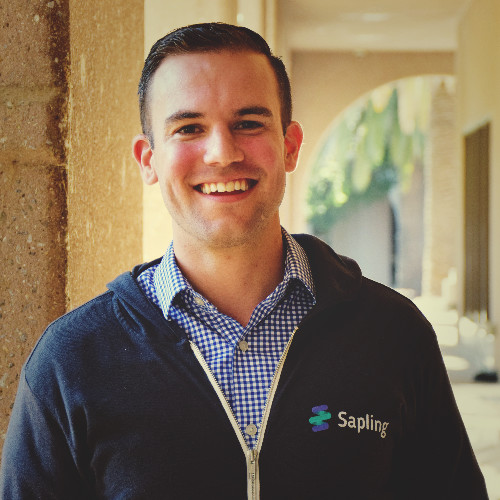Implementing HR Technology effectively: Bart MacDonald, Founder, Sapling
- 4 Min Read
Bart Macdonald, Founder, Sapling talks to HRD Connect about the biggest misconceptions with HR Technology and how this can be implemented efficiently into businesses.
- Author: HRD Connect
- Date published: May 30, 2019
- Categories

What is the true potential of HR and how can technology help us to achieve it?
In this instalment of our Tech Founders series, Bart MacDonald, Founder, Sapling discusses the biggest misconceptions behind HR technology, and how to successfully implement this into an organisation.
Why was it necessary to create Sapling?
With millions of job openings and top talent having more opportunities than ever, an intentional employee experience sets a company apart from the rest. Sapling was created out of necessity to help new hires succeed and thrive within a company from the moment they’re hired to the first ninety days and throughout their entire employee lifecycle.
I saw those growing pains firsthand while working at a company that was in hypergrowth. It became quickly apparent the importance of having systems and technology in place that could scale with your company while creating a meaningful employee experience. Once we identified that gap in the market for an HR tool that could scale, connect, and enhance the employee experience, Sapling was born. Our mission is to empower people to reach their potential through automation, data, and connectivity from day one.
Why is HR technology crucial to the success of a business?
Employees are the backbone of every company, so in order for your company to succeed, the people of your company must be set up for success. What does that look like? It manifests itself in a smooth onboarding process (which statistics have shown directly helps increase productivity), in an effective employee feedback form, in constructive manager-employee 1:1s, and beyond! HR technologies that invest the employee experience gain so much in retention and productivity— impacting any company’s bottom line.
What’s the most common misconception among organizations regarding HR technology?
The biggest misconception regarding HR technology is that it only does one main thing: payroll and benefits. However, the world of HR technology is continuing to evolve and now covers the entire employee lifecycle, from sourcing candidates, onboarding and training new hires, to benefits and perks, to performance management, and beyond. The days of simple HR systems to process administrative tasks is far behind us, HR technology is here to help guide managers, instill company culture, elevate team members and be a strategic partner in business decisions.
How can an organization most effectively implement new HR technology?
Implementing a new HR technology is critical. In order to do this effectively, a couple of things need to happen. The first is to ensure that the goal of your business is correctly aligned with what the HR technology is able to provide and solve. Nowadays there are hundreds of systems to choose from all addressing a different pain point. If you want a smooth implementation process, ensure that your goals align with the technology you are implementing so that your business needs are met.
At Sapling, we make our customer’s implementation process as smooth as possible. Every customer has a dedicated customer success manager that helps them from implementation to product launch. A successful implementation comes down to two critical parts, the first is having an implementation plan— with just two sole owners of the HR tool. And the second is to have documentation around the policies and procedures you want to instill in your new software.
Which emerging technologies do you think will transform HR in the future?
When I think of emerging technologies, I look at where the future of work is headed. The three largest shifts and trends are around productivity, diversity, and flexible teams (distributed around the world). So emerging HR technologies that support these trends will transform HR— by allowing People Ops leaders to focus less on the tactical and more on strategic plans. Keep an eye out for HR technologies that embrace AI to support predictive analytics and management of people data. That data will be crucial to picking up on engagement patterns and communication behaviours in your employees and insights gleaned from the technology will help give People Ops leaders an ever more critical voice at the executive table.







